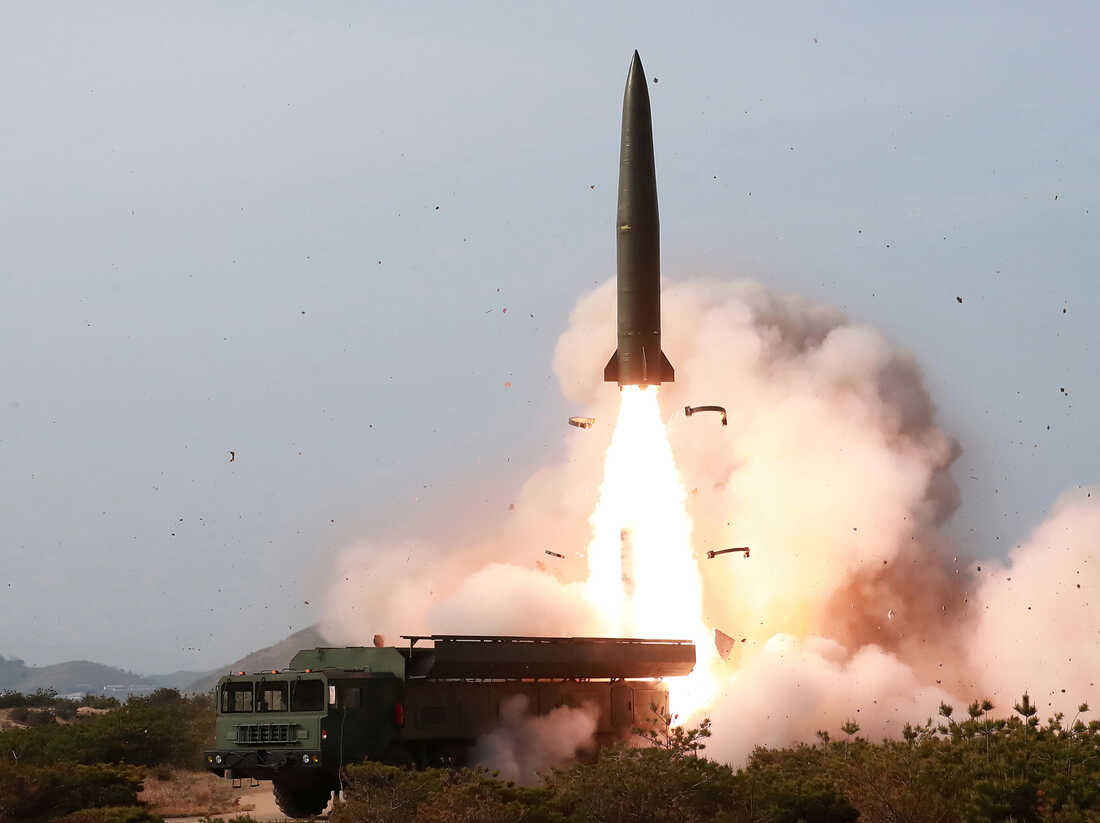Russia Strikes Ukraine Using North Korean-Made Short-Range Ballistic Missiles
Recent intelligence from South Korea revealed that North Korea supplied approximately 2,000 containers containing short-range ballistic missiles, anti-tank guided missiles, various ammunition, and other weapons to Russia.
(DEFENCE SECURITY ASIA) — Russia reportedly has started using short-range ballistic missiles (SRBM) supplied by North Korea to target cities in Ukraine, providing further clear evidence of the increasingly close military cooperation between the two “pariah” countries.
The Governor of Kharkiv Oleh Syneihubov stated that Russian forces utilized foreign-manufactured guided missiles in their recent attacks on Ukraine last week.
He emphasized ongoing investigations and confirmed that markings on the guided missiles suggested a non-Russian origin.
“We are currently conducting thorough investigations; however, I would like to emphasize at this juncture that all markings on the guided missiles have been erased. Nevertheless, what we can ascertain is that the country responsible for manufacturing these guided missiles is not Russia,” stated the official.
John Kirby, spokesperson for the US National Security Committee, revealed that Russia launched North Korean-manufactured missiles against Ukraine on December 30, resulting in explosions in open areas.
However, further impacts from Russia’s deployment of more North Korean-guided missiles on January 2 are still under assessment.

It is believed that Russia has acquired military supplies, including guided missiles, artillery shells, and kamikaze drones, from North Korea and Iran to support its forces engaged in the conflict against Ukraine.
Analysts in South Korea suggest that the short-range ballistic missiles launched by Russia, provided by North Korea, are likely of the KN-23 type with a range of up to 900 km.
The capabilities of the KN-23 closely resemble Russia’s Iskander short-range ballistic missiles.
Recent intelligence from South Korea revealed that North Korea supplied approximately 2,000 containers containing short-range ballistic missiles, anti-tank guided missiles, various ammunition, and other weapons to Russia.
These shipments, suspected to contain over 200,000 122mm cannon shells and over a million 152mm cannon shells, departed from Rajin, Hamgyong North Province, to Vladivostok in the Russian Far East.
South Korean military sources estimate that North Korea’s supply to Russia, consisting of 2,000 containers, based on satellite imagery.

South Korean intelligence officials suggest that Russia, in return, is expected to provide assistance in space exploration technology, nuclear-guided missiles, fighter aircraft manufacturing, and air defense systems.
This heightened exchange of shipments occurred in August, preceding the visit of North Korean leader Kim Jong Un to Russia in September, where he met with President Vladimir Putin at the Vostochny Cosmodrome in the Russian Far East.
Ahead of Kim Jong Un’s visit, only one North Korean container ship was observed sailing to Vladivostok each week.
However, this frequency increased to one ship every three or four weeks.
As a reciprocal gesture, Russia is anticipated to contribute technological aid in satellite development, nuclear-guided missiles, fighter jet production, and air defense systems to North Korea.
Notably, North Korea recently achieved a historic milestone by successfully launching the intercontinental ballistic missile Hwasong-18, marking a significant advancement in its ballistic missile technology.
Analysts attribute this success to the collaboration and technology-sharing between North Korea and Russia in the field of missile technology. — DSA


Comments are closed.